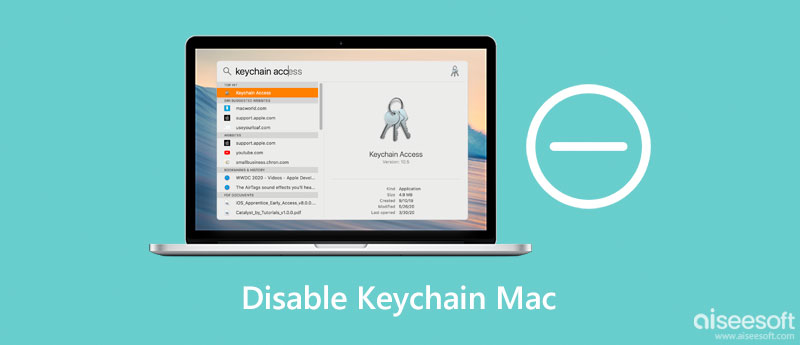Introduction
Keychain is a macOS feature that securely stores passwords, credit card numbers, and other sensitive information. It can be a useful tool for managing your online accounts and keeping your data safe, but it can also be a privacy concern. If you’re worried about Keychain’s security or simply don’t want to use it, you can disable it.

Introduction
- Open the Keychain Access app. You can find it in the Applications folder or by searching for it in Spotlight.
- Click on the "Keychain Access" menu in the menu bar and select "Preferences."
- Click on the "General" tab.
- Uncheck the box next to "Enable Keychain."
- Click on the "Save" button.

Subheadings
Keychain is a macOS feature that securely stores passwords, credit card numbers, and other sensitive information. It can be a useful tool for managing your online accounts and keeping your data safe, but it can also be a privacy concern. If you’re worried about Keychain’s security or simply don’t want to use it, you can disable it.
- Disney Cruise Sailor Svg Files Disney Cruise Sailor SVG Files: Your Ultimate Guide To Creating Magical Vacation Memories
- Free Svg Disney Files For Cricut Dive Into The Magical World Of Free SVG Disney Files For Cricut: Unleash Your Creativity!
- Free Disney Halloween Svg Files Unleash The Magic Of Halloween With Free Disney SVG Files
- Svg Files Free Disney Unlock The Magical World Of SVG Files Free Disney: A Comprehensive Guide For Creative Enthusiasts
- Free Disney Svg Files For Cricut Unlock Your Creativity With Free Disney SVG Files For Cricut
Conclusion
Disabling Keychain is a relatively simple process, but it’s important to understand the implications before you do so. If you disable Keychain, you’ll need to remember all of your passwords and other sensitive information, and you’ll lose the ability to use iCloud Keychain to sync your data across your devices. However, if you’re concerned about Keychain’s security or simply don’t want to use it, disabling it is a good way to protect your privacy.
Step-by-Step Instructions
To disable Keychain on Mac, follow these steps:
- Why Disable Keychain?

There are several reasons why you might want to disable Keychain.

You’re concerned about its security. Keychain stores your passwords and other sensitive information in an encrypted database, but it’s still possible for someone to access your data if they have physical access to your Mac or if they can hack into your iCloud account.
-
You don’t want to use it. Keychain can be a useful tool, but it’s not for everyone. If you don’t want to use Keychain, you can disable it and manage your passwords and other sensitive information yourself.
-
How to Disable Keychain
Disabling Keychain is a relatively simple process. Follow the steps in the "Step-by-Step Instructions" section above.
- What Happens When You Disable Keychain?
When you disable Keychain, you’ll need to remember all of your passwords and other sensitive information. You’ll also lose the ability to use iCloud Keychain to sync your data across your devices.
- Alternatives to Keychain
If you’re looking for an alternative to Keychain, there are several third-party password managers available. Some popular options include 1Password, LastPass, and Dashlane.
FAQs
- Is it safe to disable Keychain?
Yes, it’s safe to disable Keychain. However, you’ll need to remember all of your passwords and other sensitive information, and you’ll lose the ability to use iCloud Keychain to sync your data across your devices.
- How do I disable Keychain on my iPhone or iPad?
To disable Keychain on your iPhone or iPad, go to Settings > Passwords & Accounts > Keychain. Then, turn off the "iCloud Keychain" toggle.
- What are some alternatives to Keychain?
There are several third-party password managers available, including 1Password, LastPass, and Dashlane. These password managers can store your passwords and other sensitive information securely and sync your data across your devices.
- Can I disable Keychain and still use iCloud?
Yes, you can disable Keychain and still use iCloud. However, you’ll lose the ability to use iCloud Keychain to sync your passwords and other sensitive information across your devices.

